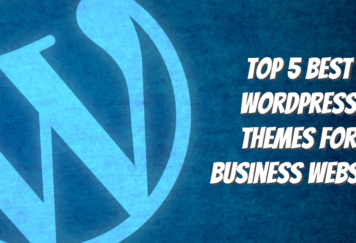Entering your 20s is as good a time as any to start a business from scratch. However, there are factors that keep you from reaching your goal. Lacking resources is one thing, but you may also lack enough knowledge and experience to craft your business from the ground up. This shouldn’t stop you from trying. At your age, anything is possible so long as you work hard and learn from the steps that other seasoned business owners have gone through to get to where they are. Here’s where your journey starts:
Start with a great idea
A great business has a great idea that serves as its foundation. You can’t possibly come up with a successful brand if you can’t come up with a service or product that’s fresh and disruptive. Innovation should be at the center of what you do as a business owner.
Consider the problems you want to solve and determine what solutions are currently available. Then analyze the weaknesses of these solutions and develop an idea that improves upon prior concepts. Going through this process will help you develop a product or service that people would want to buy.
If you’re still unsure about where to start, consider conducting an industry survey. Send out emails with embedded forms for people to fill in. If you have a hobby you love, build your business around it so it won’t feel like work when you actually launch your business.
Create a business plan
A detailed business plan is invaluable. It narrows down your ideas into a vision, mission, and value proposition that defines how you run and promote your business. Once you’re done here, you only need to put your concept into writing.
As you write your business plan, consider the range of services or products you want to sell and the perceived value you would like to offer. You also need to craft an ideal customer profile that specifies the kind of customers that have the most need for your offers.
Your business plan should also set the goals you want to accomplish in five to 10 years. With a well-thought-out business plan, you will be able to give yourself direction and a reference for the growth strategies you want to execute.
Know where to get funding
Many business leaders would rather borrow money than pull some cash out of their emergency accounts. You should do the same if you need enough capital to get the ball rolling.
Small business loans through private and government-backed lenders should be your primary source of funding if you would prefer that your savings remain untouched. You should be able to qualify for many types of small business loans if you have a good credit record. Most banks require at least a 620 to approve microloans.
Loans shouldn’t be your only source of funds. You should also get funding through people you may or may not know. Get family members or friends to invest in your idea and pay them back with their share of the equity.
Crowdfunding platforms are also great if you have a potentially disruptive idea to share. You can also turn to venture capitalists and angel investors who prefer putting their money on young entrepreneurs with amazing ideas.
Never neglect your networks
Money and time aren’t the only resources essential to the life and growth of your business. You also need to build valuable networks with people who will support your business’s growth. Connect with other entrepreneurs in your area and add people outside your niche or industry to your LinkedIn account. These leaders could put in a good word about your business or invite you to industry events offering more opportunities to socialize.
If you are attending a networking activity, make sure you come equipped with a stack of business cards and materials introducing your concept to potential allies. It’s also important to interact with influencers and coaches in your industry across platforms like Twitter and LinkedIn. By being present online, you could attract entrepreneurs who might be interested in forging partnerships.
Develop a marketing plan
A good idea is not enough to build a successful business. Your game plan should also include a system for generating leads, raising brand awareness, and finding growth opportunities. A well-developed marketing campaign can help you immensely with this. If you don’t have enough money to start one, begin with basic social media marketing by creating a Facebook page and posting a good mix of text and visual content.
As your customer base grows, you might want to diversify your marketing efforts by running newsletter campaigns and setting up an official website or e-commerce platform. You can expand your reach further by running pay-per-click campaigns on Google. If you don’t have experience with that yet, you can always look for a PPC consultant to walk you through setting up and maintaining your online ads. It’s also important to build a creative team that includes graphic designers, content writers, and analytics experts who can maintain your business’s momentum.
Set and reach specific KPIs
KPIs or key performance indicators let you know if your business is going in the right direction. They help you determine what’s strong about your brand and whether there is any room to improve it. Without KPIs, you have no targets to aim for and your business could either stagnate or lose steam.
As the business owner, your main KPI would be the net profit. This tells you if your business is receiving a constant stream of income each month. You also need to check the lifetime value of each customer so you will know if they’re ready to buy your product or sign up for your service again. There are many more KPIs worth mentioning, but you should only focus on those that align with your objectives.
Endnote
If you think you are too young to start a business, think about how the world’s greatest entrepreneurs like Steve Jobs were able to construct massive business empires in their 20s. You could be one too if you follow and apply the guide above.
Follow TechStrange for more!





